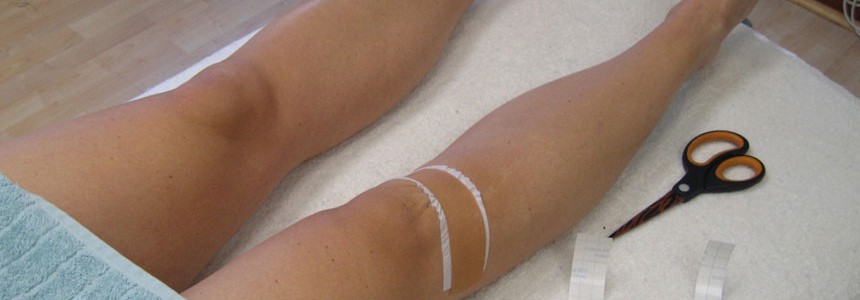Knee pain (runner’s knee)
Patellofemoral syndrome (runner’s knee) refers to pain arising from the joint between the kneecap and the underlying thigh bone.
CAUSE
Runner’s knee most often results from overuse of the knee. When the knee is bent and straightened, the kneecap slides up and down within a groove on the end of the thigh bone. With repeated bending and straightening, such as during activities involved in walking, cycling, running and jumping, the underneath surface of the kneecap can become irritated.
SYMPTOMS
The main sensation associated with runner’s knee is pain. This is felt behind and around the kneecap which can be associated with grinding noises heard when the knee is bent or straightened, a sensation of the knee giving way and weakness in the knee. The knee may also swell at times.
Knee pain (Iliotibial Band Friction Syndrome – ITBFS)
The itiotibial band is a band of strong connective tissue which runs from the pelvic bone down the outside of the thigh to the top of the shin bone. Itiotibial band friction syndrome is a condition which describes the rubbing of this band of tissue as it passes over a bony bump on the outside of the knee joint.
CAUSE
This is an overuse injury. When the knee is bent and straightened the iliotibial band slides over a bony bump on the outside of the knee. When this is performed repeatedly or when the band is excessively tight, wear and tear of the band can develop as it flicks over the bony bump. To heal this damage, the body commences an inflammatory response.
SYMPTOMS
ITBFS results in pain felt on the outside of the knee. The pain is often aggravated by activities which involve repeated bending and straightening of the knee such as running. It typically develops gradually. Initially, the pain may begin as a dull ache down the side of the knee which appears near the end of the session and disappears when you stop. However, if you continue to exercise and cause further rubbing of the iliotibial band, the pain may progress to become more intense which may also take longer to disappear when you stop exercising.

